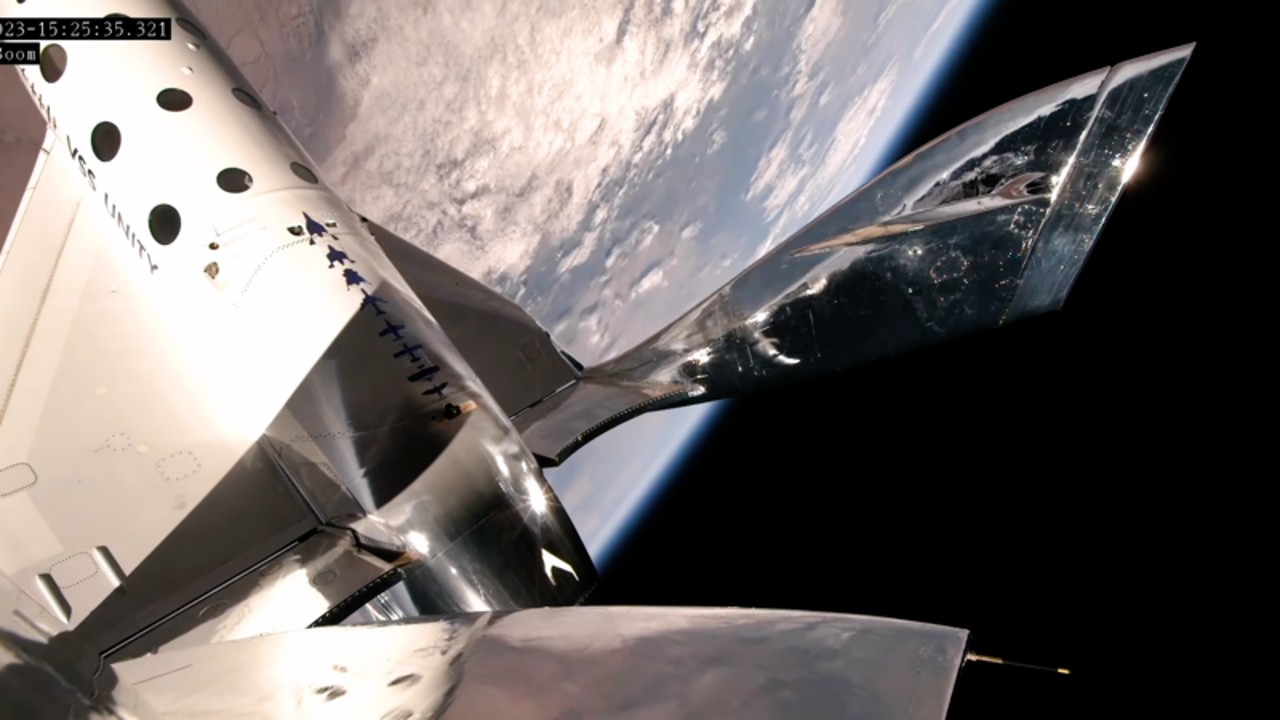Virgin Galactic just launched 2 million-year-old fossils of human ancestors to space on tourist flight
A two-million-year-old early human ancestor has become the oldest traveler to space.

In a tribute to humankind's quest to explore the cosmos, two fossilized bones of ancient humans flew into space for the first time aboard Virgin Galactic's third commercial spaceflight on Sept. 8.
A two-million-year-old collarbone and a 250,000-year-old thumb bone were stored in a protected container and tucked into the pockets of Timothy Nash, one of three paying customers who launched aboard Virgin Galactic's V.S.S. Unity spaceplane to suborbital space about 55 miles (88.5 km) above Earth's surface.
"The magnitude of being among the first civilians going into space, and carrying these precious fossils, has taken a while to sink in, during all of the preparations for the flight," Nash said in a statement, "But I am humbled and honored to represent South Africa and all of humankind, as I carry these precious representations of our collective ancestors, on this first journey of our ancient relatives into space."
Related: Virgin Galactic launches 3 of its original space tourist customers to the final frontier (video)
One of the fossils ferried to space, a collarbone belonging to the skeleton of an ancient 4-foot-2 boy, was discovered in what is known as the Cradle of Humankind near Johannesburg in 2008 by Berger's son, Matthew Berger, who was only nine years old at the time. The fossil is linked to a hominin species known as Australopithecus sediba, whose members researchers think walked on two feet but also had remnant apelike behavior like climbing trees about two million years ago.
"While the journey is symbolically important itself, the fossil is also famous for showing how children and youth can contribute to science through exploration and discovery," said Zeblon Vilakazi, the vice chancellor at the University of Witwatersrand in Johannesburg in South Africa, where the fossils are organized.
The second, more recent fossil that visited space last week was a 250,000-year-old thumb bone belonging to the Homo naledi species, which was discovered in late 2013 and early 2014 as part of the largest excavation till date that uncovered 1,550 specimens at a single location in Africa. Members of this species had apelike shoulders but their teeth, arms, feet and brain resembled closely to those of humans, and they even carved symbols and made tools in caves where they lived, signifying that religion and art were part of pre-human history, researchers say.
Breaking space news, the latest updates on rocket launches, skywatching events and more!
Bringing these fossils into space was a way for humanity to show its appreciation for all the of the ancestors and ancient relatives that came before us, Lee Berger, a paleoanthropologist at the University of Witwatersrand in Johannesburg in South Africa who was directly involved in discovering both fossils, said in the same statement. "Without their invention of technologies such as fire and tools, and their contribution to the evolution of the contemporary human mind, such extraordinary endeavors as spaceflight would not have happened."
"These fossils represent individuals who lived and died hundreds of thousands of years ago, yet were individuals who likely gazed up at the stars in wonder, much as we do," Matthew Berger, who carried the fossils from their home in South Africa and handed them to passenger Nash in a brief ceremony prior to launch, said in the same statement. "I imagine they never could have dreamed while alive of taking such an incredible journey as ambassadors of all of humankind's ancestors."
Virgin Galactic plans to continue launching roughly one tourist flight per month for the near future, with more rapid flights coming sometime in the years ahead. In 2026, Virgin Galactic plans to open flights of its new "Delta class" of space planes, which are designed to be capable of flying one mission every week.

Sharmila Kuthunur is an independent space journalist based in Bengaluru, India. Her work has also appeared in Scientific American, Science, Astronomy and Live Science, among other publications. She holds a master's degree in journalism from Northeastern University in Boston.

